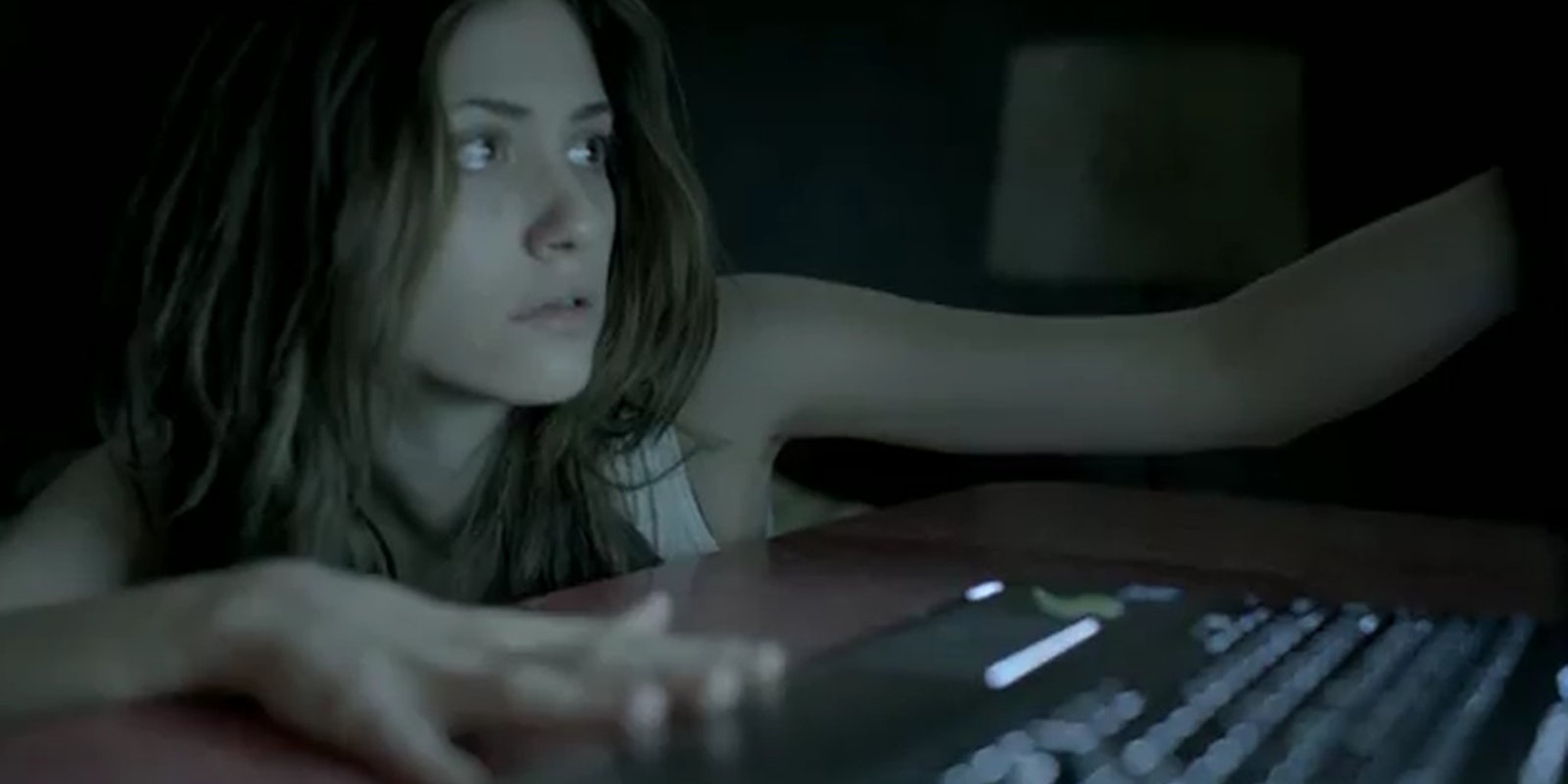A young woman named Christina has been kidnapped. She is trapped in a room and only you, through the magic of the World Wide Web, can get Christina out.
This is the premise of Inside, a social-media film experiment starring Emmy Rossum—and the Internet. Presented by Intel and Toshiba, the series is airing solely on YouTube and the story unfolds based off of community participation. And the creative forces behind it really want you to think it’s a new idea.
But the Hollywood hype obscures the fact that YouTubers like Pogobat, freddiew, and emokid21ohio have been creating their own episodic movies for years—perhaps not with the same production values, but with far more authentic social roots.
To date, only two episodes have been filmed, and they are as unsettling as expected: Christina has limited food, endures psychological torment, and is under constant surveillance by her kidnapper. The first episode, posted on July 22, has garnered more than half a million views and 400 comments. The second, uploaded Wednesday, has under 7,000 views, but 240 comments.
Over on Facebook, more than 40,000 people have liked the Inside Experience fan page. Trapped fictional character Christina Perasso has her own page with 15,000 fans. Facebook users are getting sucked into the experience, leaving helpful tips and words of encouragement.
Francesca Ducanes writes “WE’RE GETTING TO THE BOTTOM OF THIS CHRISTINA HANG ON”, while Cathy Perasso, Christina’s fictional mom, praises the efforts of the audience:
“I’m watching these codes being broken and just amazed at what incredible people are helping out and working hard for you, Chistina [sic]. I feel like you’re so close to me when I see this deep concern. There are some very, very smart people working here and this code is so close to being broken. I hope you are sleeping and getting a little peace after a difficult, difficult day. I love you, my little ballerina.”
Other audience members can’t get past the premise. Facebook user Blaire Dunn wonders what would happen if he called the police to report a missing girl, while SuperMickGee writes on YouTube: “Maybe she could ask the guy holding the camera and filming her for a boost up through the broken floorboard to the room above—just a thought. Oops, did I just ruin it for someone—sorry ;-)”
Inside’s director D.J. Caruso’s past works include Shia LaBeouf vehicle Disturbia. In a behind-the-scenes video, he described this as a “new idea,” adding that “we wanted to make this an addictive experience for the viewer.”
Ben Trickleback, the social media director of the series, marvels at how “traditional storytelling narrative” can unfold “through social media,” essentially “creating a story through those platforms.”
Creating “addictive experiences,” playing with “traditional story-telling narrative” through social media, and letting the “viewer participate in the film” sounds fancy coming from the mouths of Hollywood types, but is it a new thing? YouTubers have been doing that practically since the site’s creation half a decade ago.
Kansas State University professor Michael Wesch, whom the Daily Dot dubbed “Professor YouTube,” told the Daily Dot in an earlier interview: “One of the great things about watching YouTube unfold over the years has been the experiments in storytelling.”
Wesch cited the fictional love story that played out on YouTube between emokid21ohio and emogirl21 as one of the first examples of innovative storytelling.
Dan Brown, who goes by Pogobat on YouTube, started a social media experiment of his own when he let YouTube dictate his real-life actions for a year. The series, titled Dan 3.0, didn’t run it’s full course; Brown explained in a phone interview he quit the project this April because of “personal reasons.”
Brown’s newest series titled “Delicious Steak with Dan Brown” started three weeks ago, and also aims to engage his YouTube fans, whom he calles the “PogoTribe.”
In a recent email exchange, Brown explained that “‘Delicious Steak’ represents a shift in focus—less about me and my life, and more about the PogoTribe and what we can accomplish as a community.”
Brown’s first community experiment in “Delicious Steak” is playing chess with YouTube. While there is no definitive winner in the chess match yet, Brown writes “the PogoTribe has been pretty unanimous with their voting—that scares me.”
As for incorporating feedback into well-produced Internet shorts, YouTuber Freddie Wong told the Daily Dot via email he “constantly” uses suggestions from the YouTube community.
LA filmmaker Tim Pape, who is currently shooting a video series with the video game entertainment network Machinima (and also incorporates viewer feedback in episodes), told the Daily Dot in a phone interview:
“YouTube and the Internet is the first place, maybe ever, where people put up a product, artistic or not, and almost immediately get feedback—unlike TV or movies—and I think that’s the reason why it will be the future of content.”
So Hollywood, far from innovating, is doing what it does best: copying and commercializing.


